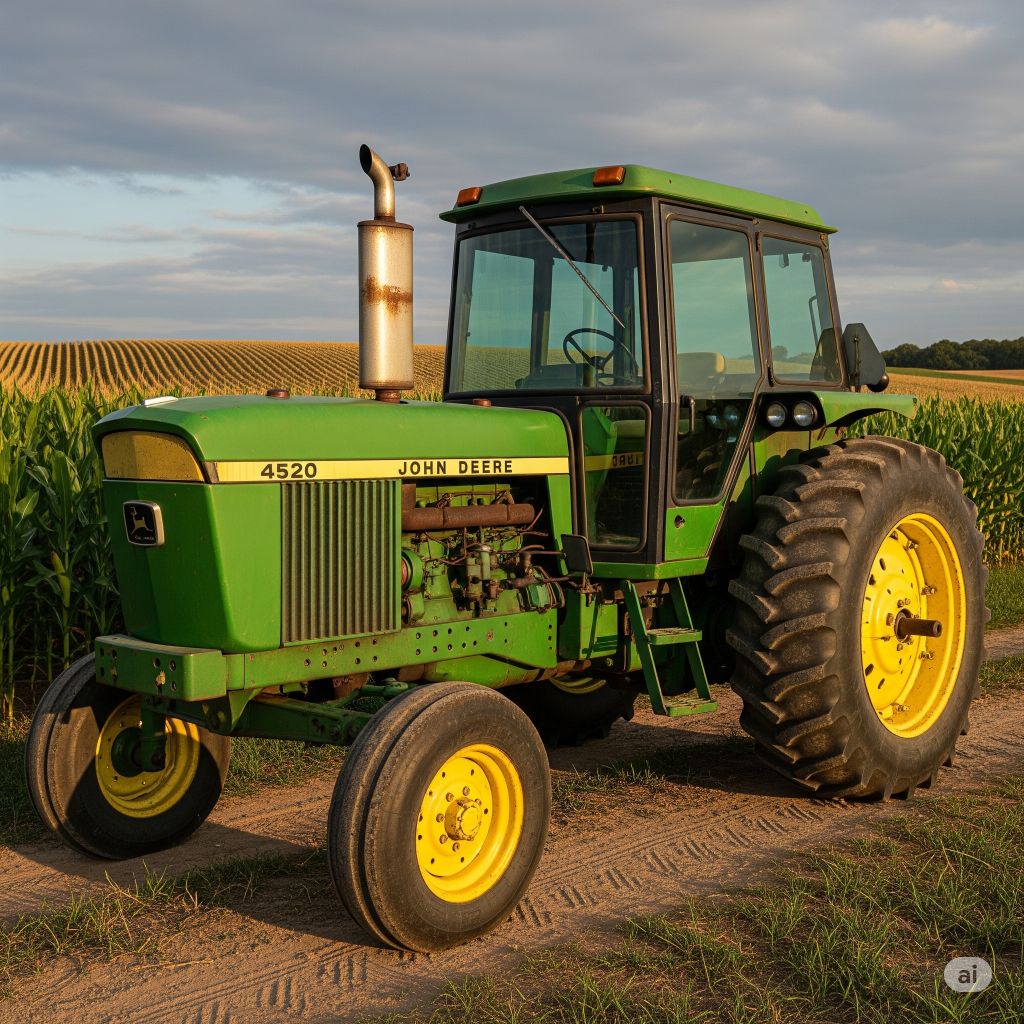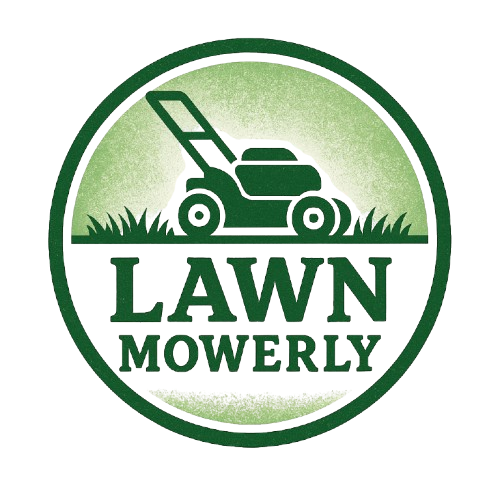
The John Deere 4520 is a versatile compact utility tractor that blends power, comfort, and dependability into one machine. Designed for both residential and commercial use, it comes with a 60+ horsepower turbocharged engine, reliable hydraulics, and a wide range of attachments.
However, like any machine, the 4520 is not without its flaws. In this guide, we’ll go over common John Deere 4520 problems, practical fixes, maintenance tips, specifications, and frequently asked questions to help you get the best out of your machine.
Common John Deere 4520 Problems and Their Fixes
1. Hard Starting or No Start
Symptoms: Clicking sound, cranks but doesn’t start, intermittent ignition.
Causes:
- Weak battery
- Faulty starter relay
- Glow plugs not working (for cold weather)
- Clogged fuel filter
Fixes:
- Test and replace battery if below 12.6V
- Replace faulty starter relay
- Test glow plug resistance and replace as needed
- Replace fuel filter and check for air in fuel lines
2. Hydrostatic Transmission (eHydro) Problems
Symptoms: Tractor doesn’t move, whining sound, sluggish performance.
Causes:
- Low hydrostatic fluid
- Dirty or old hydraulic oil
- Faulty pedals or control module
- Air in the system
Fixes:
- Check and top up hydraulic/transmission fluid
- Flush and replace fluid with recommended Hy-Gard oil
- Calibrate or replace eHydro pedal position sensor
- Bleed the system of air
3. Overheating Issues
Symptoms: Temperature gauge spikes, coolant overflow, engine shuts down.
Causes:
- Clogged radiator or screen
- Low coolant
- Faulty thermostat
- Failing water pump
Fixes:
- Clean radiator fins and debris screens
- Top off or replace coolant (50/50 premix)
- Replace thermostat
- Inspect and replace water pump if leaking
4. PTO (Power Take-Off) Not Engaging
Symptoms: Rear PTO won’t spin, disengages under load.
Causes:
- Faulty PTO switch or solenoid
- Low hydraulic pressure
- Damaged PTO clutch
Fixes:
- Test and replace the PTO switch
- Check solenoid resistance and replace if faulty
- Inspect hydraulic pressure and clutch pack condition
5. 3-Point Hitch Won’t Lift or is Jerky
Symptoms: Implements don’t raise or lower smoothly, or lift slowly.
Causes:
- Low hydraulic fluid
- Clogged rockshaft filter
- Sticky control valve
Fixes:
- Fill to the proper hydraulic fluid level
- Replace or clean rockshaft filter
- Lubricate or replace faulty lift control valves
6. Electrical or ECU Error Codes
Symptoms: Flashing error lights, limp mode, malfunction indicator on dash.
Causes:
- Loose ground or battery cable
- Failed sensors (coolant temp, PTO, pedal position)
- Moisture in connectors
Fixes:
- Clean and tighten all ground points
- Use a diagnostic tool to pull error codes
- Replace affected sensors
- Dry and seal connectors with dielectric grease
John Deere 4520 Specifications
| Category | Specification |
|---|---|
| Engine | Yanmar 2.2L 4-cyl turbocharged diesel |
| Horsepower | 60 gross HP / 52 PTO HP |
| Transmission | eHydro (Hydrostatic, 3-range) |
| Fuel Capacity | 13.5 gallons (51 liters) |
| Hydraulic System | Open center, 12 gpm total flow |
| 3-Point Hitch | Category I, 2,500+ lbs lift at ball ends |
| Rear PTO | Independent, 540 rpm |
| Operating Weight | 4,000–5,000 lbs depending on configuration |
| Wheelbase | 71.5 inches |
Maintenance Schedule and Tips
Every 50 hours:
- Check engine oil level
- Inspect air filter
- Grease fittings
Every 200 hours:
- Change engine oil and replace filter
- Replace fuel filter
- Inspect fan belt
Every 400 hours:
- Change transmission/hydraulic oil and filter
- Replace air filter
- Clean or replace hydraulic screen
Every 600 hours:
- Check valve clearance
- Inspect turbocharger for carbon buildup
- Replace coolant if due
Tips:
- Use JD Plus-50 II or equivalent diesel-rated oil
- Always bleed fuel lines after replacing filter
- Clean radiator screens regularly during mowing or loader work
Common Attachments and Compatibility
The 4520 is compatible with numerous implements including:
- Loaders: John Deere 400CX or H180
- Backhoes: John Deere 485
- Mowers: Mid-mount or rear rotary cutters
- Tillers, box blades, post hole diggers using the 3-point hitch and PTO
John Deere 4520 Pros and Cons
Pros:
- Turbocharged power in a compact size
- Strong 3-point and hydraulic performance
- Reliable Yanmar diesel engine
- Comfortable cab options (factory or aftermarket)
Cons:
- eHydro issues more common than gear models
- Sensitive to contaminated diesel (requires clean fuel)
- Electrical faults in wet conditions
- Parts can be expensive for older models
Frequently Asked Questions (FAQs)
1. What years was the JD 4520 produced?
It was built from 2005 to 2014 as part of the 4000 Twenty Series.
2. What is the difference between the 4520 and 4720?
The 4720 offers more horsepower (~66 HP) and slightly stronger hydraulics.
3. Does the 4520 require DEF?
No, it is Tier III compliant and does not require diesel exhaust fluid (DEF).
4. What is the best oil for a 4520 engine?
Use John Deere Plus-50 II 15W-40 or any high-quality API CI-4/CH-4 oil.
5. Is the 4520 good for loader work?
Yes, when paired with a 400CX loader, it’s ideal for bucket, pallet fork, or snow work.
Final Thoughts
The John Deere 4520 is a well-built, capable machine suited for a range of agricultural and property maintenance tasks. While it does face issues like hydrostatic quirks and occasional electrical errors, most of its problems are easily managed with routine maintenance and timely repairs. If you own a 4520 or are considering buying a used one, keeping this guide in mind will help ensure it stays reliable for many years to come.

I’m David man behind Lawn Mowerly; I’ve been dealing with lawnmowers and Tractors with my father since I was a kid. I know every make and model and what each one is capable of and love helping people find the perfect equipment for their needs.
